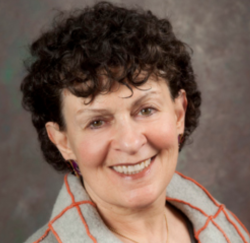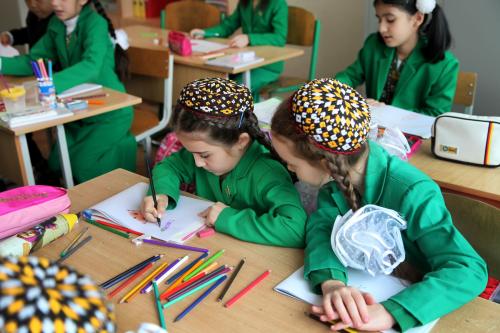The call came in from two leading researchers of the World Bank. “Preschool is on the international agenda. As we roll out programs around the globe we’re concerned about doing it right—ensuring high quality and having a strong evidenced based curriculum. So what’s the deal? We’ve heard misgivings about the whole-child approach.”
Preschool is indeed on the global agenda. The United Nations Sustainable Development Goals notes, “Quality early education provides children with basic cognitive and language skills and fosters emotional development.” The U.N. also has the explicit goal that “By 2030, all girls and boys have access to quality early childhood development, care, and pre-primary education so that they are ready for primary education.” Now that preschool has the world’s attention, it is imperative that we get it right.
One road to getting it right is to look for areas of consensus in the science of learning. A recent consensus report from Brookings and the Duke University Center for Child and Family Policy suggests that the leading experts in the field are aligned about the importance of high quality preschool and the benefits it offers young children. A new study by Bruce Fuller and his team further endorses this view. Studying the Early Childhood Longitudinal Study Birth Cohort, Fuller noted that attendance at high quality preschools resulted in leaps in literacy and math scores by roughly a third of a standard deviation on well normed and highly used tests. Further, and in complete agreement with these newer studies, research demonstrates that a rich curricular approach to preschool is key to children’s success. That is, if children are not intentionally exposed to language, literacy, and math in their preschool environments, they will not learn as much language, literacy, and math!
When these reports are reduced to headlines, the message seems clear—we need to “academicize” preschool curricula to ensure high quality and better outcomes. Indeed, Jade Jenkins and Greg Duncan write in the fourth chapter of the consensus report that we must “provide teachers with lesson plans to follow in which playful activities are strategically organized to present children with learning opportunities that are focused, sequential and cumulative.” They then conclude, however—due to a lack of evidence to support widely used whole-child curricula—that we should “move away from the comparatively ineffective whole-child approach.”
The point that preschool should be imbued with more content seems spot on. But the rejection of a whole-child approach is premature at best. The whole-child approach endorses a pedagogical philosophy that all aspects of children’s development must be addressed when crafting preschool curricula including academic, social-emotional, and domain-general learning to learn skills. It generally makes a commitment to a pedagogical philosophy that is more “playful” in delivery—where children are less likely to sit in rows and where discovery or “active” learning is favored over more passive learning. In the United States, there are two widely used and questionably implemented examples of whole-child curricula—the Creative Curriculum and High Scope (used in 72 percent of Head Start classrooms). These curricula have been extensively studied and, “lack empirical support for effectiveness.” Therefore, the report concludes, we should not look to whole-child approaches as a way to achieve high quality outcomes for preschoolers. These data suggest that The Creative Curriculum and High Scope do not foster school readiness any more than curricula that early childhood centers develop on their own. This evidence, however, does not negate the whole-child ideology.
In fact, the authors of the Brookings/Duke report and Fuller & colleagues offer hints that they would welcome a hybrid model that melds a rich academic curricular approach with an integrative playful learning pedagogy. Jenkins and Duncan write:
“Looking beyond individual curricula, an appealing policy approach to promoting school readiness is to develop an integrated academic and behavioral curriculum and then focus on ensuring that it is implemented in classrooms as faithfully as possible.”
While Fuller suggests:
“If you can combine creative play with rich language, formal conversations and math concepts, that’s more likely to yield the cognitive gains we observed.”
Research from the newly minted science of learning suggests just such an approach under the rubric of guided play. In guided play, adults have a clear learning goal in mind—be it in language, STEM, social regulation, or causal learning. The Tools of the Mind curriculum provides an example of a guided play approach that boosts executive functioning (i.e. inhibition, cognitive flexibility, and working memory) and academic school readiness. Children reach these goals through active, playful learning in which an environment is constructed that facilitates the learning goals—a la Montessori programs, which have demonstrated efficacy in low-income African American and Latino preschoolers—or through the gentle coaching from adults that helps focus on the right dimensions of a problem (e.g., “what makes this triangle like that triangle?”). The “guided” aspect of the playful experience, also called constrained tinkering, allows children to travel through learning spaces with agency and with increased attention while achieving sound school readiness outcomes.
Several promising programs provide proof of concept that an integrated playful learning approach offers a way to preserve a whole-child approach while transmitting specific learning outcomes. The Boston Universal Pre-K Program, for example, merged proven literacy and math curricula and added an intentional focus on social skills all within a playful learning curricular approach. The program had moderate to large impacts on children’s language, literacy, numeracy, and math skills and smaller, but still significant impacts on executive functioning and emotion recognition. The Boston program also prioritized high-quality teacher child interactions and provided coaching and additional supports to improve fidelity of implementation.
The “Evidence-Based Program for Integrated Curricula” (EPIC) curriculum, which targeted mathematics, language, literacy, and approaches to learning skills, offers a second example of a comprehensive playful learning approach. The EPIC curriculum also had a strong emphasis on formative assessment and creating a learning community for teachers. A rigorous study of the EPIC curriculum in 70 Head Start classrooms demonstrated its effectiveness with greater impacts on math, literacy, and listening comprehension than the control curriculum.
And more recently, “Connect4Learning” which combines evidence-based approaches in literacy, math, science, and social-emotional development offers the promise of yet another comprehensive approach. These programs strike the balance between targeted programs that rigorous research shows boosts children’s school readiness and an integrated playful learning approach that cuts across all content domains and addresses the whole-child.
What we are learning is that preschool programs that focus solely on free play or social growth, will not allow children to develop the breadth of skills necessary for later school success. And both the Brookings/Duke report and Fuller’s data speak to this point. Both reports also underscore that playful pedagogies are the best bet for achieving these ends.
It is premature, then, to sound the death knoll for whole-child approaches to learning. Done right, a whole child approach can offer high quality preschool experiences with academic curricular goals that are delivered in a guided play pedagogy. It is critical that we not throw out the proverbial baby with the bathwater and that all children have an opportunity to learn literacy, math, social skills, science and more in integrated and active learning settings.
The Brookings Institution is committed to quality, independence, and impact.
We are supported by a diverse array of funders. In line with our values and policies, each Brookings publication represents the sole views of its author(s).








Commentary
The premature death of the whole-child approach in preschool
Rich curriculum is not incompatible with a playful pedagogy
June 8, 2017